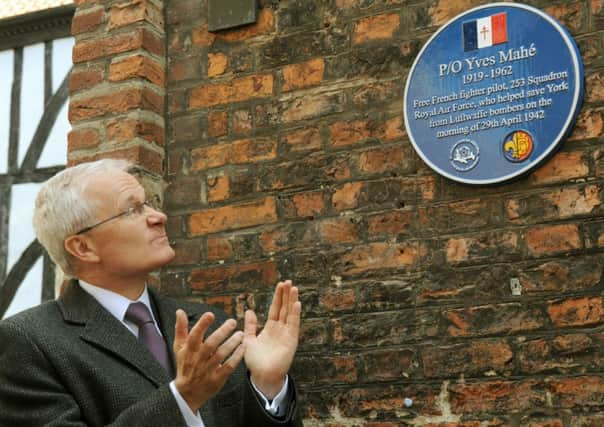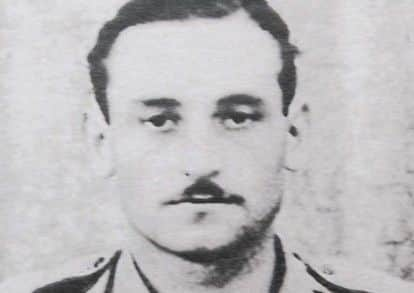Honour at last for Frenchman who saved York from Nazi bombs


But to this day there are those who do not know the remarkable story of Yves Mahé.
Now a campaign by local schoolchildren, who were captivated by the story of the French pilot, has led to a plaque being unveiled in the city.
Advertisement
Hide AdAdvertisement
Hide AdThe event took place yesterday in the city performed by Bernard Emié, the French Ambassador to the UK, ensuring Mr Mahe’s heroics will live on for generations.


Forty Luftwaffe bombers flew to Britain on Wednesday April 29, 1942, with their sights firmly set on the historic city of York. For more than 90 minutes, the German bombers attacked the city, setting it ablaze.
York’s own blitz, known as the Baedeker Raids, saw more than 90 people killed, homes in the city damaged and the city’s medieval Guildhall largely destroyed.
However the damage could have been much worse but for the intervention of lone French fighter pilot 23-year-old Yves Mahé, serving with 253 Squadron RAF Fighter Command, who saw the city ablaze from a distance and immediately dived into the action to help.
Advertisement
Hide AdAdvertisement
Hide AdIan Reed, museum director, at the Yorkshire Air Museum, at Elvington, near York, said: “Mahé, flying his Hawker Hurricane of 253 Squadron near the city saw the flames over York and realised is was a bombing raid, so immediately intervened unsupported.
“Although support did follow, Mahé’s intervention had already set the attackers in retreat, with his instant score. The attackers had been lining up to strike Rowntree’s main factory, which, unbeknown to many, was actually involved in packing tons of ammunition, shells and bombs, so would have devastated a huge area including York Minster, if it had been hit.
“York could have lost the Minster and one of its major and most historic manufacturers and very many more lives. It was an act of selfless bravery to go in alone - he did not know that other fighters were on their way, but still some way behind him, very late in the day.”
The plaque, created by York Civic Trust, has been placed at St Martin Le Grand Church, Coney Street, York, which was severely damaged in the raid.
Advertisement
Hide AdAdvertisement
Hide AdAmong those attending yesterday were pupils from St Wilfrid’s Primary School, in York, who campaigned for his efforts to be officially recognised.
Teacher, Daniel Jones, said his pupils thought the hero had been forgotten and said they were thrilled with the plaque. Its a really nice end to the story. The children are over the moon,” he said.
After the unveiling the ambassadorial party travelled to the Yorkshire Air Museum to mark the 70th Anniversary of the formation of Elvington’s famous French Squadrons of RAF Bomber Command. During the Second World War, RAF Elvington, where the museum is now based, was the only Bomber Command station to be operated by another nationality, with the two French Squadrons: 346 “Guyenne” and 347 “Tunisie” Squadrons.